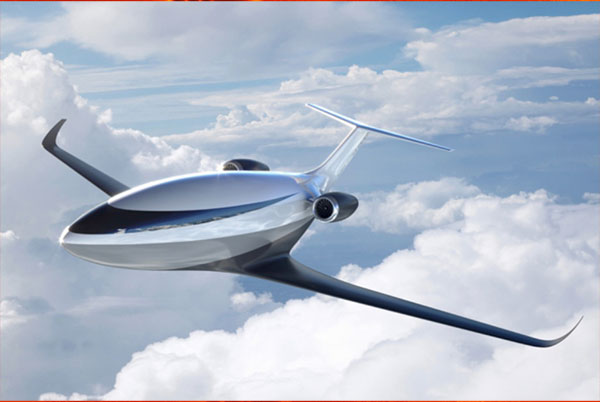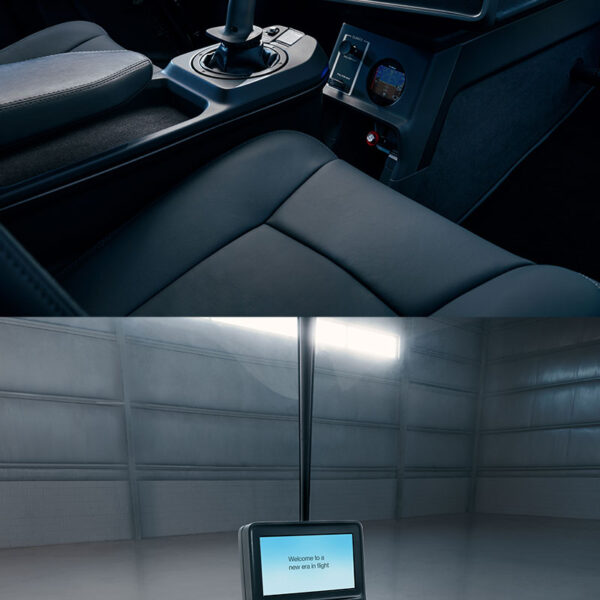Jet Tech: Gulfstream Aircraft Noise Reduction Patent
Aerospace engineers tasked with redesigning and improving business jet interiors have challenging jobs. Jobs that, thanks to ongoing innovation and intense competition, only become more difficult with time. As they continuously refine some of the most advanced aircraft for some of the most discerning customers, the opportunities for further improvement become increasingly sparse and hard-earned.
Cabin and cockpit noise is one such area, and a recent patent filed by Gulfstream Aerospace demonstrates just how creative engineers must become to achieve further progress.
In the early days of executive aviation, advancements were significant and frequent. The transition from propeller-driven aircraft to jets instantly reduced interior noise and vibration, and the elimination of the droning oscillation and vibration of the props resulted in a far more comfortable environment. Studies demonstrated that as noise and vibration decrease, passenger and pilot fatigue decrease correspondingly, and marketers were quick to pursue these improvements to provide a better product to their customers.

A new patent from Gulfstream integrates active noise reduction (ANR) microphones and speakers directly within environmental fan assemblies, introducing noise cancelation at the exact source of the noise itself
As the initial business jets like Jetstars and Sabreliners evolved into Gulfstreams and Falcons, other sources of interior noise were attacked. Engineers added sound-deadening material to isolate the passengers from the constant rush of wind noise. They also began to incorporate elastomeric isolators, similar to vibration-reducing engine mounts, to various parts of the fuselage and cabin partitions that significantly reduced humming and vibration throughout the cabin.
While this was going on, aerodynamic engineers were busy developing methods to reduce parasite drag on the outside of the airframe. While their motivation to improve cockpit window design and minimize or reposition external antennas targeted fuel savings and aerodynamic efficiency, their efforts also significantly reduced interior noise levels.
Eventually, physical advancements achieved as much as they realistically could. Any additional noise-deadening material or any thicker fuselage walls or windows would result in unacceptable weight and size penalties. To continue reducing interior noise levels, engineers had to get creative, and they did so by using electronics, circuitry, microphones, and speakers.
Known as active noise reduction, or ANR, the concept is relatively simple. A microphone would be placed at the area of concern and pick up all audible noise frequencies. A computer would analyze those frequencies and wavelengths and invert them to produce “anti-noise” – a sound consisting of the opposite wavelengths and frequencies.

This “anti-noise” would then be emitted through strategically-placed cabin speakers, effectively canceling the frequencies of concern. To the user, flipping a switch and activating the ANR system would seemingly erase the annoying cabin noise altogether, creating an environment free of wind noise and droning engines. Additionally, sounds they want to hear such as music or conversation would become more audible with improved clarity.
Before long, ANR cabin systems would become commonplace. Modern business jet cabins and cockpits evolved into some of the most hushed, tranquil aircraft environments ever created. But continuous improvement and competition demand further improvement.
In April of 2022, Gulfstream filed a patent to pinpoint the location and identify the source of various noises in the passenger cabin. While the purpose was technical and not developed to advance the occupant’s comfort, the company gained an in-depth understanding of the few remaining sources of cockpit noise and identified avionics cooling fans in the cockpit as a significant concern.

Armed with this knowledge, the team developed the patent featured here to attack this noise from its source. The new patent describes a fully-integrated ANR system that places the microphone, circuitry, and “anti-noise” speaker entirely within the airflow stream of the avionics fan assemblies. Precisely-designed ductwork shrouds the system, ensuring the components do not substantially impede the flow of air through the fan.

To the pilots seated immediately ahead of these droning cooling fans, the result is artificial silence. In addition to increasing comfort and minimizing fatigue, the concept would make it easier for pilots to detect and identify abnormal sounds. The resulting decrease in noise would also enhance safety by increasing the clarity of radio communications.
The patent also positions the technology to be integrated into the passenger cabin. By eliminating the sound of fans or rushing air from environmental vents, the cabin environment would become that much more tranquil and comfortable. With some additional design work, Gulfstream can potentially leverage this new technology to further enhance the onboard experience of every occupant aboard.
Topics Related To: FUTURE OF FLIGHT
Otto Aviation Concept Jet
Among the various aircraft concepts in various stages of development, one particularly compelling design is from Otto Aviation.
Spiroid Winglets – Sculpting Air to Increase Efficiency
It might not seem logical that adding additional structure to an aircraft’s wing could reduce drag and enable it to slip through the air more efficiently.
Skyryse – Simplifying Aircraft Control with New Technology
Aviation startup Skyryse progresses toward FAA certification for a revolutionary new pilot/aircraft control interface that can simplify piloting and increase safety.





